We all seem to have that dark corner of our garden or porch that looks uninviting, cold, and in major need of color. Have no fear—Janet Loughrey offers solutions for livening up that shady area, including insights into the best plant combinations that will thrive in low light.
Nearly every gardener has experienced the problem of too much shade, which can cause plants to become too leggy or fail to thrive. Whether it's a wooded suburban lot or a north-facing apartment balcony, low light means more growing challenges. Rather than being problematic, these dark areas can be viewed as an opportunity. (See more articles about shade gardens.)
Pots in this shaded entry garden are grouped together for greater impact. Phyllostachys nigra (black bamboo), offers structure and height. Other plants include ‘Kong’, ‘Sedona’ and ‘Chocolate Mint’ coleus, ‘Mardi Gras’ and ‘Margarita’ sweet potato vines, and ‘Bonfire’ begonia. (Photo by: Janet Loughrey. Design by: JJ De Sousa.)
Adding containers to shady spots is a practical way to optimize these spaces. By using brightly colored or shiny metal pots, combined with lighter or contrasting hues of foliage and flowers, these decorative arrangements can brighten up even the darkest corner of a porch, deck, or entryway.
A stump is cleverly recycled as the base for a shallow log container that blends perfectly with the landscape. The emphasis is on woodland foliage, with hart’s tongue and deer ferns, moss, and native sedums. A small hellebore and Hosta ‘Tiny Mice’ complete this serene combination. (Photo by: Janet Loughrey. Design by: Vina Winters.)
Choosing the right plants is essential to successful shade gardening. Woodland natives, ferns, and hostas are just a few plants that prefer lower light levels. Many garden specimens will thrive equally well in containers, given the right conditions. A single plant, such as Japanese maple or bamboo, can be just as compelling as a combination.
For shade containers, Vina Winters chooses a foliage specimen such as Hypoestes (polka dot plant) and pairs it with a similarly hued flower such as tuberous begonia. Soft shield and maidenhair ferns provide contrasting texture and shape. (Photo by: Janet Loughrey. Design by: Vina Winters.)
Plants with attractive foliage offer reliable season-long color. Coleus are workhorses of the shade garden, with a nearly endless array of colors. Other reliable foliage standbys include Japanese painted fern, sweet potato vine, and Rex begonias.
A north-facing wall is softened by this hanging planter of pink impatiens and fuchsias flanked by ‘Kingswood Torch' coleus. Asarina (climbing snapdragon) adds height, while ‘Margarita’ sweet potato vines trail gracefully over the side. (Photo by: Janet Loughrey. Design by: Lucy Hardiman.)
An underutilized alternative to annual bedding impatiens is Torenia (wishbone flower), which blooms consistently over several months in colors of blue, purple, pink, and yellow. Other prolific bloomers include fuchsias and begonias such as ‘Bonfire’.
This secluded riverside retreat is adorned with million bells, impatiens, and ferns. ‘Religious Radish’ coleus and ‘Bonfire’ begonias in a pot alongside the bench provide a dramatic burst of color. (Photo by: Janet Loughrey. Design by: Cheryl Borden.)
Optimal growing conditions are essential to healthy shade container plantings. Landscape designer Lucy Hardiman uses high-quality potting soil, replenishing it annually. She mixes a time-release fertilizer into the top several inches of soil before planting. Because containers need frequent watering during hot summer months, nutrients quickly leach out of the soil. In midsummer, Hardiman supplements with a water-soluble bloom booster fertilizer every other week.
The crimson hue of mophead hydrangeas is echoed by red tuberous begonias planted in a teal, ceramic pot. Coleus ‘Wizard Sport’, black mondo grass, and creeping Jenny create a layered effect. (Photo by: Janet Loughrey. Design by: Vina Winters.)
There are no hard and fast rules to mixing and matching plants for shade containers. Breaking the rules can result in some unexpectedly delightful surprises.
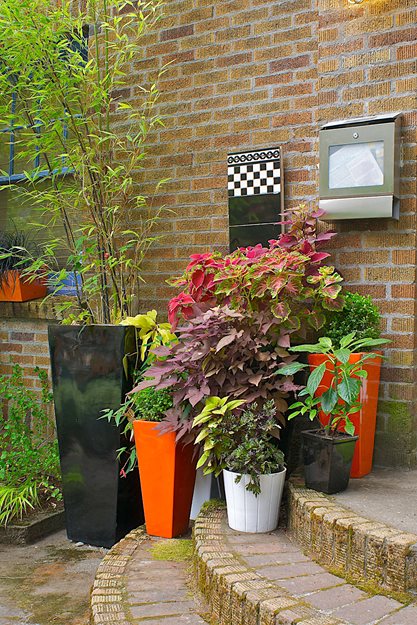
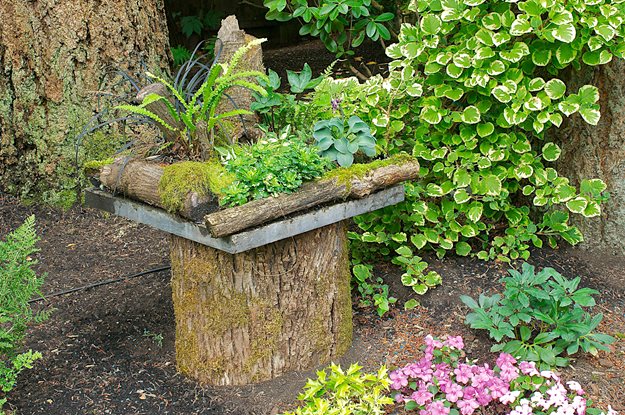
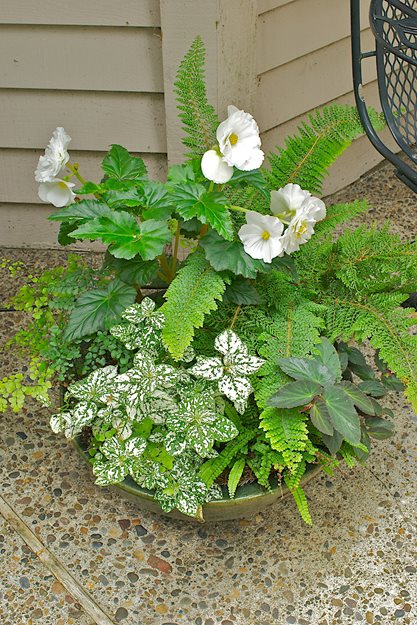
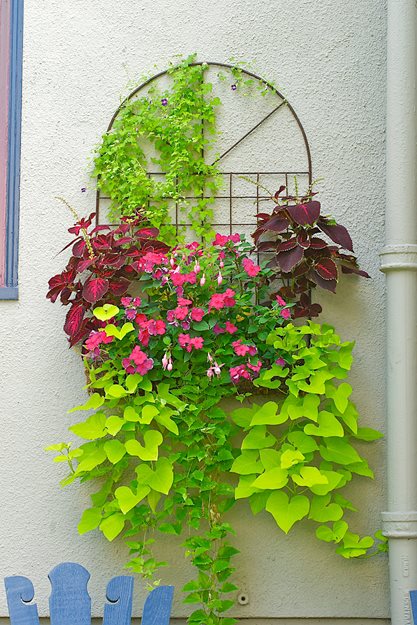
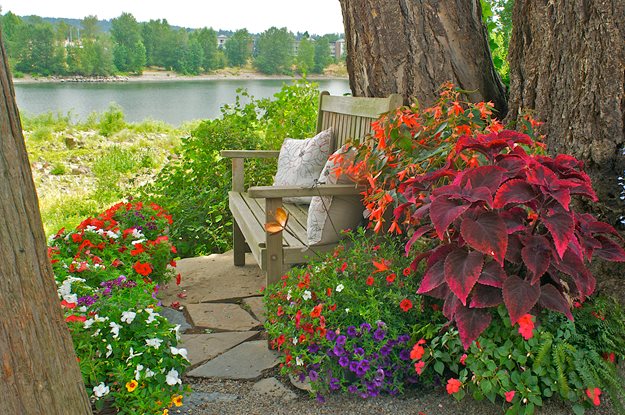
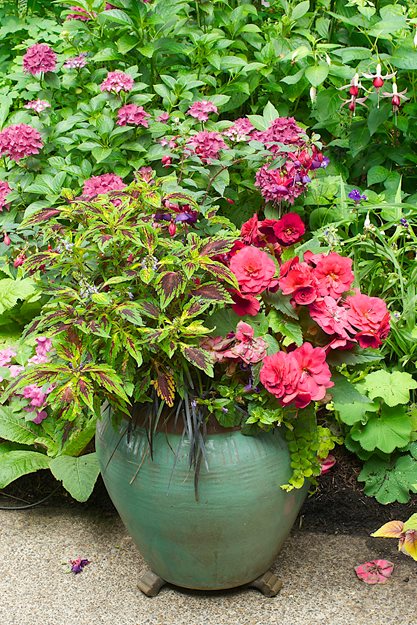








0 comments:
Post a Comment